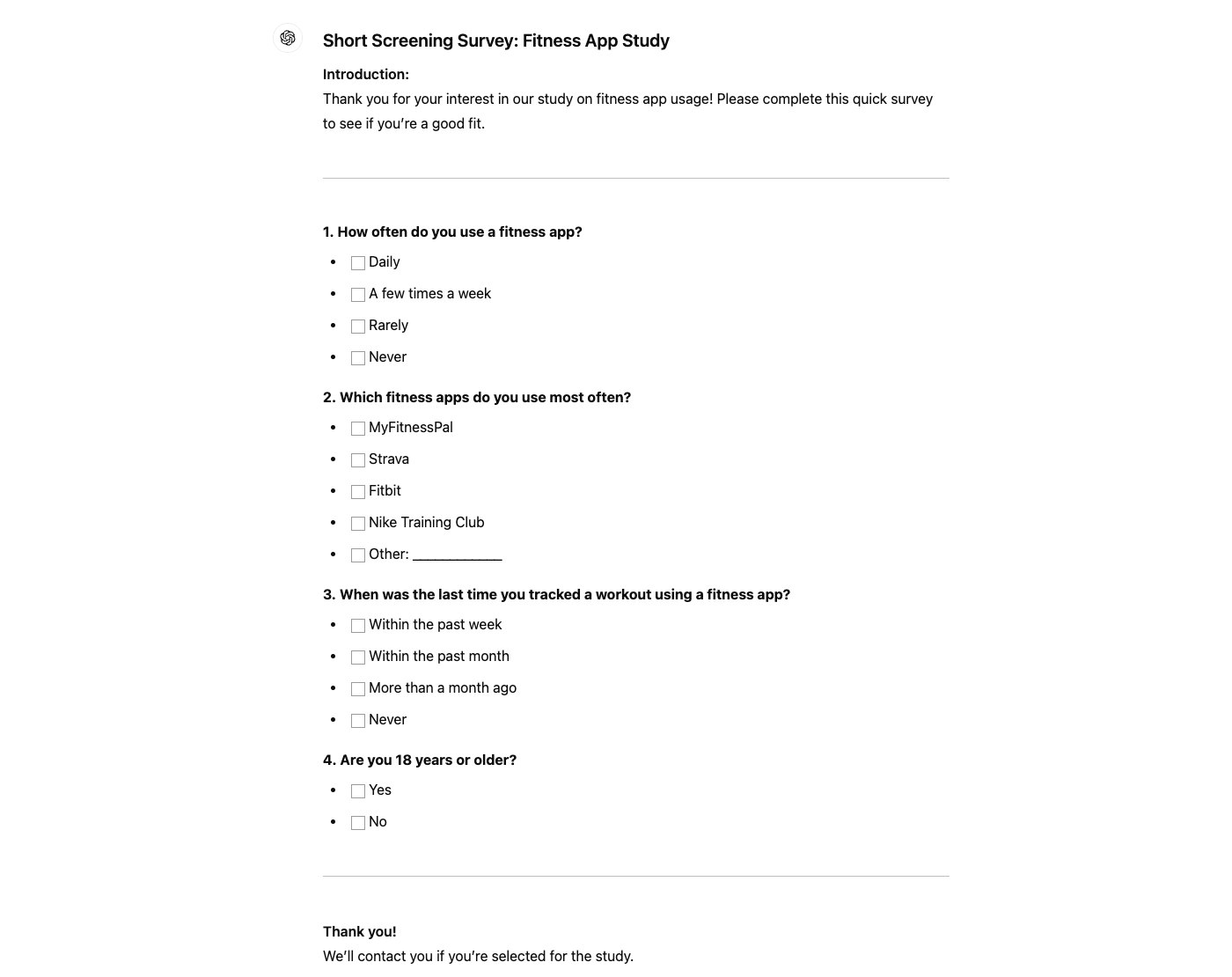How to recruit research study participants

Gathering insights from already-established studies can be helpful, but there’s nothing like running your own research study.
When you’ve got full control, you can pick a custom audience and ask all the right questions. This beats the more generalized results you can gather from existing studies.
But recruiting participants for your research study can be daunting. How do you find people who meet your study's criteria and are willing to dedicate their time to it?
This guide will explore how and where to find quality participants for your next research study.
Before you recruit, understand your target interviewees
Before you hop into the recruitment process, it’s important to understand who you want to talk to.
Audience demographics
First, think about your research goals. What are you trying to learn about your topic? Who can provide the most meaningful insights? You can narrow down your audience with these key consumer profiling characteristics:
Demographic: Age, gender, and location
Psychographic: Interests, values, and personality traits
Geographic: States, cities, or neighborhoods where participants live
Behavioral: Habits, actions, and decision-making patterns
Needs-based: Specific problems or needs, especially as they relate to your topic of interest
Participant personas
Once you’ve defined your audience and research goals, it’s time to channel your inner writer and put together three to five ideal participant personas. These personas will be your guiding light as you recruit respondents.
For example, if you’re studying fitness app usage in Gen Z, you might create a participant named Olivia. She’s a 25-year-old grad student who exercises 5 times a week and tracks her workouts religiously on fitness apps.
Your ideal participant suddenly became real in your head when you “met” Olivia. That’s the power of personas at work.
Screening criteria
Next, outline your screening criteria to make sure you pick participants who fit your research goals. This can include qualifications you’d like them to have or exclusions that weed out participants who don't align with your study’s focus.
For the example fitness app study above, your screening criteria might:
Include participants who use fitness apps at least three times a week
Exclude anyone who doesn’t use digital fitness tracking solutions
Prepare a quick screening survey for potential participants to fill out before the real deal. It can be short and focus on the most important points.
AI tools can help you speed up the screener survey process. Here’s an example created with ChatGPT for the example fitness app — it’s pretty solid.

Channels to use for recruiting participants
Once your screener survey is ready, the next step is to look for your ideal participants. Here are six ways to find participants that align with your personas.
1. Social media platforms
Social media platforms are still one of the best places to find research participants. Around five billion people worldwide use social media. That’s 59.9% of the entire population and 92.7% of all internet users on the planet, according to data gathered by the University of Maine.
Facebook, Instagram, LinkedIn, and Reddit are all great places to find participants.
Facebook is the most popular social media channel worldwide with over 3 billion active monthly users. Instagram is up there too with 2 billion active users.
Reddit is another great channel for consumer studies. The platform has at least 50 million active users, and has thousands of Subreddits on highly granular topics ranging from home repair to gaming to fashion.
LinkedIn has a more modest 1 billion users. While not all these users are active, this channel is a great recruiting option for anyone looking for B2B study participants, particularly ones who work in a specific industry or job role.
To find participants on these platforms, start by:
Joining Facebook Groups relevant to your research topic and ask for participants
Create promoted Instagram Reels and Stories to reach potential participants
Join LinkedIn Groups where your target personas spend time and make a call for participants
If you don’t already have an account, sign up for Reddit, build up some post karma, and make a call for participants in Subreddits that align with your research topic.
2. Relevant conferences
Conferences and trade shows are excellent places to find survey participants.
There are conferences, conventions, and expos for almost every topic under the sun. Looking for respondents who are engaged to be married? Hit up a local wedding expo. Want to hear from people who work in hospitality? Head to a local hospitality and tourism conference. Need insiders from the world of education? There's always an education-related convention going on.
A quick Google search for [your research topic] + [conference] + [year] can help you find relevant options quickly.
Before you head to the show, prepare a quick elevator pitch about your study. Include a brief explanation of your research goals, why the person's input is needed, and what incentives they can expect if they participate. If you need a large pool of participants, you could even pay for a booth or host a session onsite.
Once you’re back at your desk, follow up with any interested participants right away. The fresher you are in their mind, the more likely they'll be to stay engaged with your study.
3. Direct mail
For every tech-savvy Gen Z or Millennial, there’s a Baby Boomer or Silent Generation person who finds smartphones and social media exhausting. These older folks have plenty to say, and direct mail can be the best way to reach them if you need their input in a study.
Direct mail can also be an effective tactic in rural areas that don’t host many in-person events.
Keep your outreach short and simple. A postcard that outlines the goals of your study, why you value the recipient’s perspective, and how they can sign up can drive results.
4. Third-party recruiting agencies
If your team doesn’t have the time or bandwidth to find participants, you can outsource the work to a third-party research recruiting agency. These recruiting agencies do all the work for you, including contacting participants and combing through screener surveys. When the agency is done, you’ll get a vetted group of participants to survey.
Here are a few good places to start when looking for a reputable agency:
Prolific: Specializes in academic and behavioral research
Recruit + Field: Focuses on market research, consumer studies, and B2B
Rare Patient Voice: Gives patients and caregivers a voice in research studies
FindParticipants.com: Budget-friendly and often used by academic institutions
5. Email and list purchases
Emailing previous study participants with information about new projects is an easy way to get signups. However, depending on the study topic and personas, your firm may not always have the right contacts already in your email database.
Buying email lists is a shortcut to get contact information for potential research participants. However, it has to be done ethically.
When evaluating email list options, look for providers that make sure their lists have been sourced with consent. ZoomInfo, Dun & Bradstreet, and Data Axle are good places to start. Otherwise, you run the risk legal, ethical, and reputational issues.
When you're writing outreach emails, keep your message short and sweet. Personalize your subject lines to increase relevance for potential recipients, and make sure your email complies with consumer privacy regulations like GDPR and CAN-SPAM. Always include a clear opt-out from your email lists.
6. Personal networks
Your personal and professional networks can be great places to find research participants.
Write down the names of people you personally know who might fit your study's criteria. Share your elevator pitch with them and encourage them to pass the information along to anyone else who might be interested.
When you connect with people, include an easy way for them to sign up. A simple online form, a QR code linking to your study details, or a straightforward email template makes it easy for your contacts to learn more and share with others.
The role of incentives in recruiting participants for research
Incentives are a proven way to attract participants and keep them invested in your research study. You can offer all sorts of things in exchange for their input, from gift cards to cash to charity donations.
The bottom line is that you're compensating respondents for their time and energy. The right incentive can increase response rates and encourage a more diverse pool of people to join your study.
Key takeaways
Recruiting research participants isn’t always easy, but the customized insights you’ll gain from your audience are worth the effort. Before you get started, take time to clearly identify your ideal participants, create personas, and develop a screener survey to vet interested people. When you’re ready to start recruiting, tap into digital channels like social media platforms and email, offline channels like conferences and direct mail, and external sources like third-party recruiters and personal networks to find high-quality participants. Pair your request for participants with compelling incentives, and you’ll be gathering valuable insights in no time.

